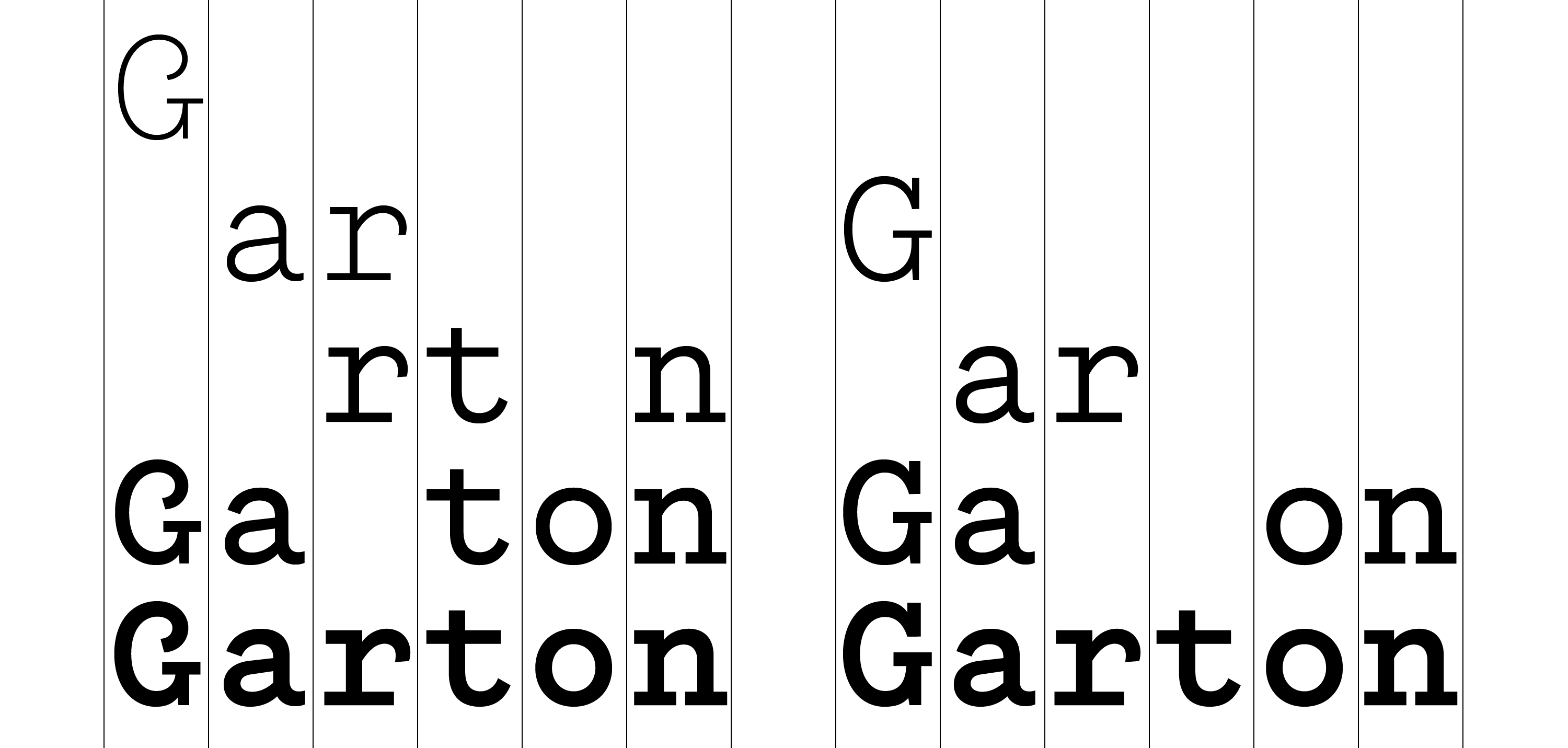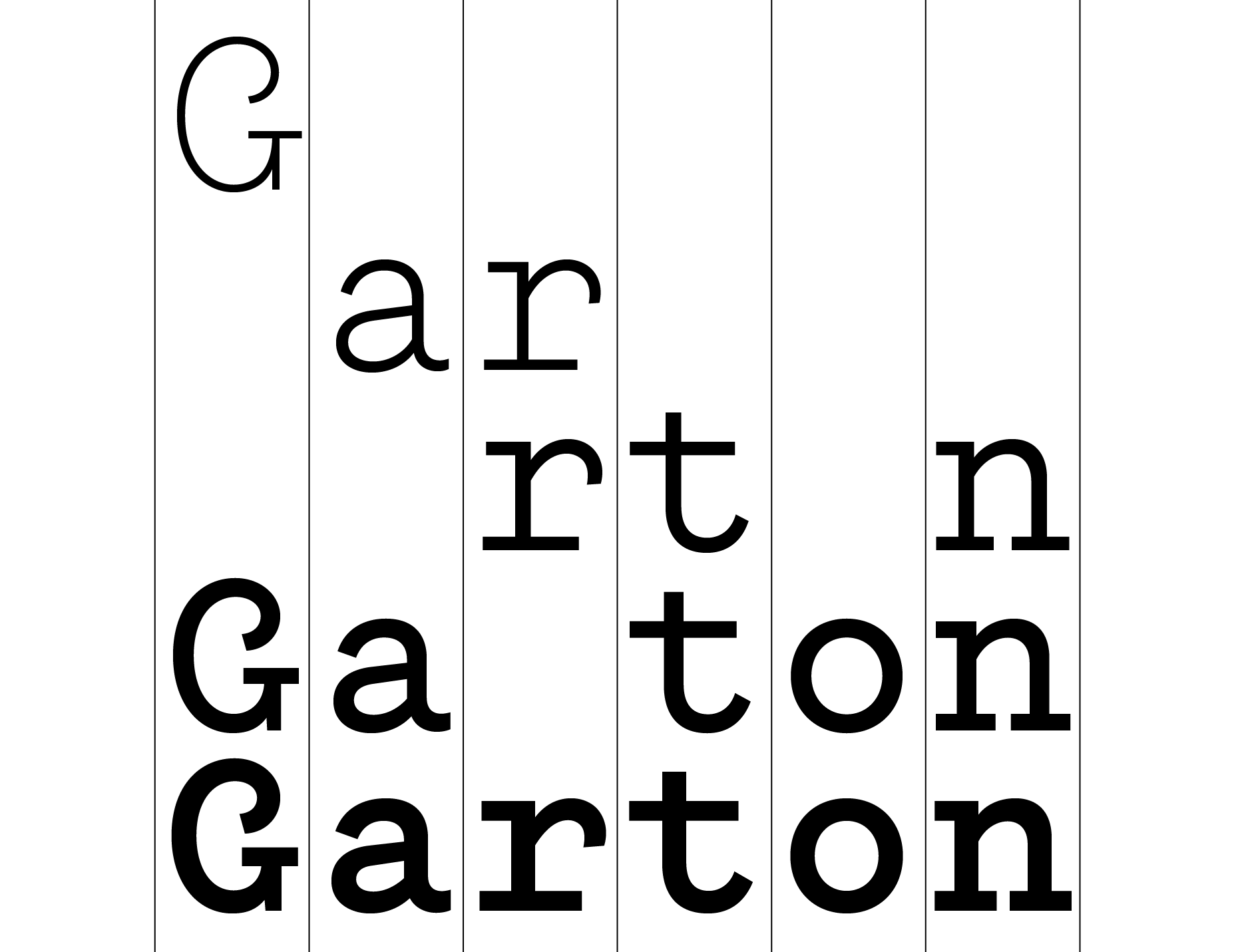Ornate Light
Ornate SemiLight
Ornate Regular
Ornate Medium
Ornate Bold
Ornate SemiLight
Ornate Regular
Ornate Medium
Ornate Bold
Plain Light
Plain SemiLight
Plain Regular
Plain Medium
Plain Bold
Plain SemiLight
Plain Regular
Plain Medium
Plain Bold
Garton emerged from a single typewritten letter, dated November 1, 1894, from the Garton Brewery in Bristol – a piece of ephemera that waited years in our archives before finding new life as a typeface.
While typewriter fonts are a loved tool in designers' arsenals, few explore the potential for elegance within their mechanical constraints. Garton comes in two distinct styles: Ornate brings a refined and decorative element to the design, with curved strokes that soften its mechanical origins, while Plain offers a more conventional interpretation for versatile everyday use.
Each style is available in five weights with corresponding italics, and both include extensive OpenType features and stylistic alternates that expand their creative possibilities.
Designed by: Hamish Makgill and Luke Charsley
Year: 2021
Glyphs: 688
Encoding: Latin Extended
File Formats: OTF, WOFF, WOFF2
Version: 1.0
Uniformity
of quality
of quality
Alexandra
Albert
Christopher
Edgar
Fuller
Grace
Herbert
James
Jessica
Jimmy
John
Maxwell
Norman
Paul
Ralph
Richard
Robert
Sandra
Steve
Stewart
Thomas
Virginia
GOLDEN
ALE
ALE
TONIC
BEER
BEER
Cash &
Carry
Carry
…you will be
unwilling to
drink any other
unwilling to
drink any other
The creative mind requires both freedom and constraint, working within established patterns while discovering new possibilities for expression and understanding.
The path to understanding comes through direct experience, not through conversation alone. We must recognize that while the world appears chaotic, patterns emerge naturally through careful observation and thoughtful design. As creators and makers, we have the power to shape these patterns, to find meaning in complexity, and to build tools that transform how humans interact with their environment. The process requires both freedom and constraint, working within established forms while discovering new possibilities. Through this delicate balance of order and creativity, structure and spontaneity, we begin to see that everything is already connected - we simply need to reveal the inherent relationships.
The path to understanding comes through direct experience, not through conversation alone. We must recognize that while the world appears chaotic, patterns emerge naturally through careful observation and thoughtful design. As creators and makers, we have the power to shape these patterns, to find meaning in complexity, and to build tools that transform how humans interact with their environment. The process requires both freedom and constraint, working within established forms while discovering new possibilities. Through this delicate balance of order and creativity, structure and spontaneity, we begin to see that everything is already connected - we simply need to reveal the inherent relationships.
The path to understanding comes through direct experience, not through conversation alone. We must recognize that while the world appears chaotic, patterns emerge naturally through careful observation and thoughtful design. As creators and makers, we have the power to shape these patterns, to find meaning in complexity, and to build tools that transform how humans interact with their environment. The process requires both freedom and constraint, working within established forms while discovering new possibilities. Through this delicate balance of order and creativity, structure and spontaneity, we begin to see that everything is already connected - we simply need to reveal the inherent relationships.

